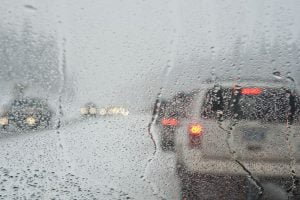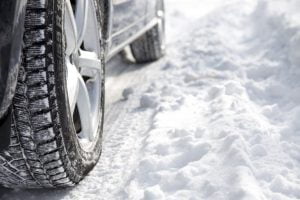Avoid a Tow: Drive Safely Even in Bad Weather

As commonplace and routine as driving is in today’s culture, it still remains a potentially dangerous activity. Cars weigh thousands of pounds and can travel at over 100 miles an hour. When you’re on the road, safety is the top priority. This becomes even more important when you’re driving in bad weather.
Common sense tells you that if conditions are not safe, you shouldn’t be on the road. That said, there are times when you have to be out during an emergency. You might have already been driving when a rainstorm started, or perhaps one of your passengers needs to get to a hospital.
In that case, make sure that you take every precaution possible while driving so you don’t ever need to call a tow truck.
Hazards to avoid in the rain
Missouri gets a lot of rain every year, and floods are always a danger. Perhaps the most obviously perilous condition caused by rain is low visibility. If you can’t see where you’re going, you’re likely to crash. In low visibility conditions, there are a few things to always remember:
- Windshield wipers: Regularly change out the wipers on your car. six months to a year is a good benchmark. If you hear them squeaking over the glass even when it’s wet, then the wipers are probably not working at their peak.
- Proper headlights: Even if the sun is still out, cloud cover and heavy rank can darken the sky. Whenever you pull up to the house, you can check the reflection of your lights to see that they’re both still working. Before you turn off the car, flash the high beams to see if they’re still in good shape, too.
- Repellent: Hydrophobic coatings applied to your windshield can make it easier to see in poor conditions. These semi-permanent treatments cause the water to ball up as soon as hit hits the windshield In light rains these coatings can allow you to drive without having to run the wipers constantly.
Whenever you see a pool of water, try and avoid it as much as possible. You can’t tell exactly how deep the pool is. It might be a pothole with jagged edges which can blow out your tires and lead to a collision. Even very thin layers of water can lead to hydroplaning. This happens when your speed over water essentially causes your car to float over a puddle. During this drift you have very little control over the vehicle. Take puddles as slowly as you can without disrupting traffic, and avoid them completely if you suspect that they’re potholes.
Snow and ice hazards

When you mix water and low temperatures, you get an additional danger- ice. Ice is incredibly slick, and driving over it at normal legal speeds can cause you to slide off of the road or into another driver. Accumulated snow packs are also hazardous for the same reasons. When you absolutely have to drive in the snow, make sure to bring along snow chains. These coverings give you added traction to prevent skidding. They’re simple to put on and take off as needed.
You can also carry a bag of kitty litter in your trunk. If you find yourself tuck in a snow drift or somewhere else that you can’t get out, spread some of the litter below the tires, it increases the traction of the tires against the road surface so you can free yourself.
Proper preparation begins at home, leaving your driveway early in the morning may actually be a hazardous event due to visibility getting reduced by shrubs, parked cars or other objects. To avoid accidents when pulling out of your driveway, use crystals for melting snow to de-ice the area. Also make sure completely defrost the windshield before you pull out.
Other tips for hazardous driving
If you can at all stay off of the road during a blizzard, flood or other storm, do it. Emergencies are sometimes unavoidable but you can take steps to negate them as much as possible. When you have to be out in the weather, do everything you can to minimize distractions. If it’s just you in the car, let your phone’s GPS take care of navigation for you. Set it to voice command mode for hands-free operation.
A few accessories in your glove compartment can make it easier for you to hold up to hard conditions. Spare phone battery banks can vastly extend the life of your phone so you can stay in contact with your loved ones or emergency situations. Road flares allow you to create a warning to direct cars away from a driving over a hazardous area. They also make it easier for emergency services to find you in an emergency.
Towing in Joplin
If worst comes to worst, you might find yourself away from a safe place. In this case try and get off of the road and out of traffic. If the temperature is dropping, break out any blankets that you have in the trunk for you and any of your passengers. The priority here is staying warm and out of the way of passing traffic. If the situation is too urgent or risky for you to simply wait it out on the side of the road, get help.
Here at Santa Fe Tow Service, we’ve been one of the most trusted emergency towing services in Joplin for decades. We also serve the rest of Missouri, as well as parts of Oklahoma and Kansas. When you’ve got a problem, you can call us any time of day or night, every day of the year. Our team is always ready to come to your aid. Whether it’s something as serious as getting stranded or as quick to fix as towing you home after you’ve blown a tire, we can do it all.
Santa Fe Towing is recognized nationally for our pioneering work in the industry. When you have us tow you home you can rest safe in the knowledge that you’re being dealt with fairly and are safe in our capable hands. Don’t let an urgent situation become a crisis; call Santa Fe Towing to get you out of trouble.

